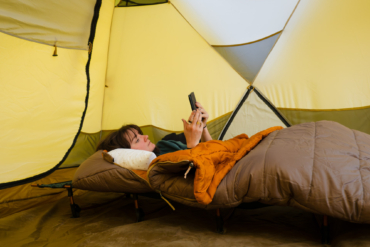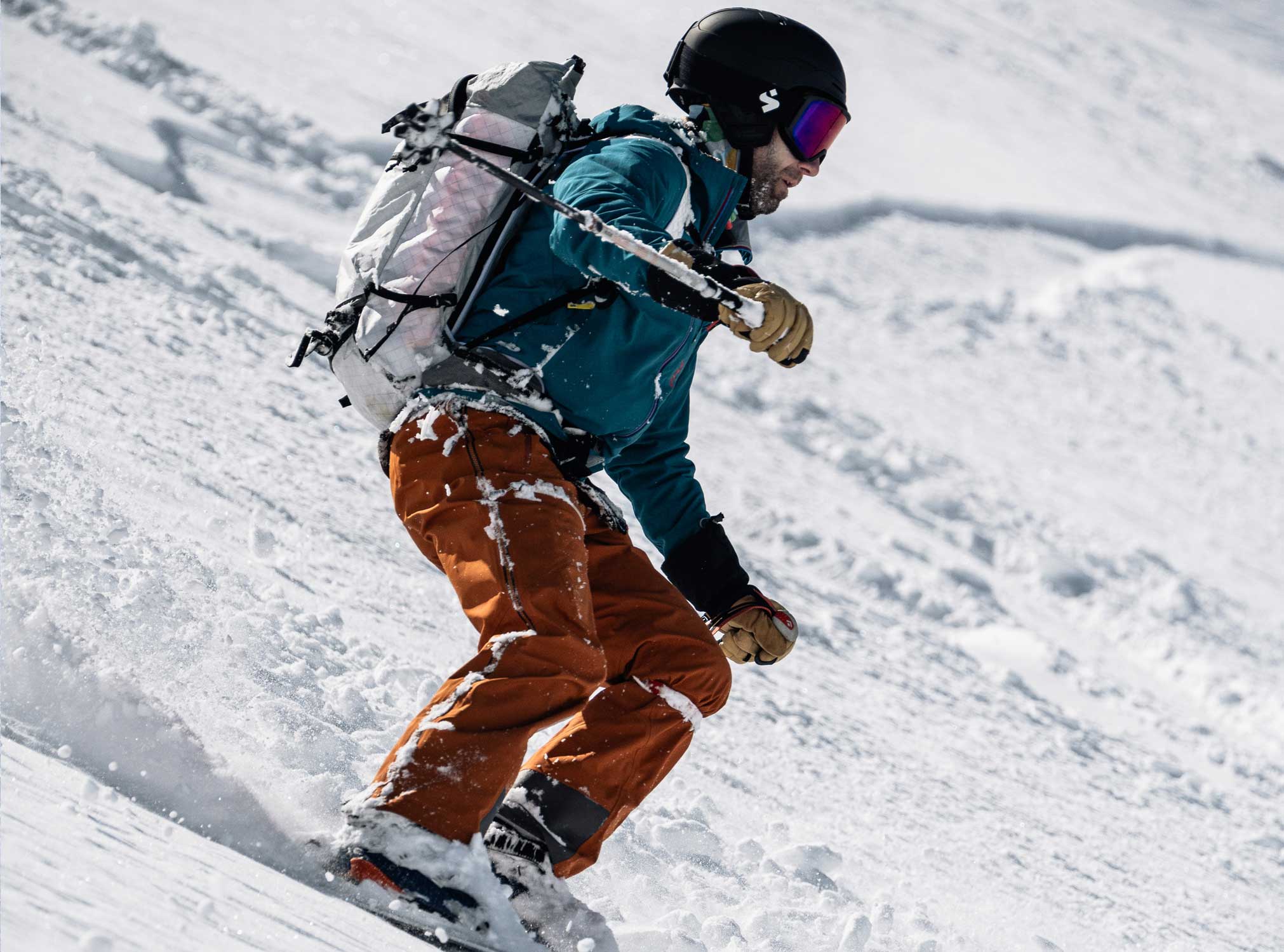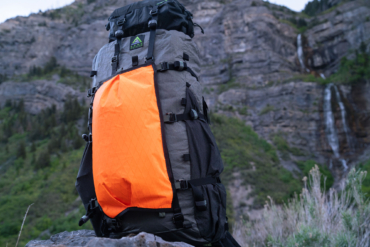
Contributing editor Jeff Kish is hiking the 1,200-mile Pacific Northwest Trail this summer. This is his fourth report from the trail. See Kish’s full collection of trip reports and gear reviews at GearJunkie.com/PNT.

It was just after dusk, and I was hiking along an abandoned forest service road that was slowly being squeezed out of existence by a tangle of encroaching undergrowth. I don’t know why I turned around. Maybe I was just being vigilant after encountering my first bear on the trail earlier that day. Maybe I thought I heard something. Maybe I just sensed that I was no longer alone.
I was three days out from Metaline Falls, having crossed the Pend Oreille River, climbed up and down Abercrombie mountain, passed through the historic ruins of Lind Ranch and the town of Northport, and now I was being followed through Colville National Forest, at the southern end of the Kettle River Range.

Tapetum lucidum is a layer of tissue that lies just behind the retina of some vertebrates. It bounces light back at their photoreceptors, aiding in superior night vision. It also causes their eyes to glow with eery iridescence in the dim beam of a headlamp. Behind the two chartreuse orbs of eye-shine that were caught in mine stood a large cat. It was a mountain lion.
We both froze, confronted by the unexpected: I, at the discovery that I was being followed, and the cat at the realization that it had been caught in the act.
I knew what I was supposed to do. It was one of those scenarios that had played out in my mind numerous times in macho fantasies of man versus beast — you puff out your chest, arm yourself with anything handy, shout forcefully, and convince the cat that you’re the wrong hiker to mess with.
I stood tall, spread my shoulders wide, and flipped my trekking pole around to grip it like a sword. But when I tried to shout, I just froze up like a timid nerd in front his dream woman, trying to spit something out — anything — but not quite getting there. I had rehearsed this moment so many times, even fantasized about it, and now that I was face to face with my first cougar, I didn’t know what to say!
Anticipation didn’t kill the cat.
I started banging my trekking poles together, making a racket, and then finally barked out something that included the words “back” and “no,” as if it might understand. It seemed more unimpressed with the display than intimidated, but it slowly crept off the trail and disappeared into the forest just the same.

My relief was temporary. The fear of seeing a mountain lion right in front me proved to be no match for that of not seeing it, but knowing it was out there, hidden in the underbrush.
It was late, but I wouldn’t stop before finding some open terrain; some barren space away from this twisted thicket with no shadows to harbor the beasts of the night. I tip-toed through the forest, breathed quiet shallow breaths and listened carefully to the darkness. The light crunch of duff under the slow and deliberate slink of a lithe creature was all that would betray the cougar’s lingering presence.
After what felt like an eternity, but was probably only 10 or 15 minutes, the sounds finally ceased, and after 15 more, I came to an open grassy patch at the foot of a trailhead. I hastily set up camp, eager to retreat to the shelter of my tent. I was under no illusion that the thin cuben fiber could spare me from an attack, but like a blanket pulled over a child’s head it brings comfort from the things that go bump in the night. I felt better not being so exposed.

The next morning I hiked on to the Kettle Crest Trail under sunshine that transformed the dark and sinister woods into a benign landscape where birds chirped and butterflies fluttered between wildflowers. The tread was well maintained and undulated across the treeline. Mountain cottontails hopped in and out of purple lupines, and I enjoyed views of distant peaks rising through the smokey air.


The largest fire in state history had been burning in north-central Washington for a couple weeks, covering an area four times the size of Seattle. Its northern edge crept through the Pasayten Wilderness, threatening my advancement west on the trail. The fires were burning more than a week ahead, but the smoke drug east through the valleys, staining the air with thick gray wisps of foreshadowing.

I spent that night on the summit of the highest peak in the Kettle River Range, under the largest super-moon of 2014. As I surveyed its rocky crown for a suitable place to pitch my tent among the ruins of an old lookout tower, the charcoal black silhouette of an owl circled above my head in the plum colored sky, growing increasingly more bold with each rotation as it spiraled down for a closer look.

I traversed the range in two days, spending the following night among the trees at Pass Spring. As I went through my nightly routine, the winds picked up, and brought with them the acrid scent of smoke and a wave of concern over the surrounding fires.
It had been days since I had access to a recent fire report, and it occurred to me that I really had no idea how close I was to trouble. I laid in my tent, studying my maps and looking for places that I could bail if I had to, but then the winds brought a gift. The familiar patter of rain drops began to rap against my tent fly, extinguishing my concern as quickly as it had been delivered.

In a few mores days, I climbed down out of the mountains into the town of Oroville and celebrated a major landmark. I had just reached the halfway point of the Pacific Northwest Trail!
See more images from the hike on page two.
—Contributing editor Jeff Kish is hiking the 1,200-mile Pacific Northwest Trail this summer. He will be making regular trip reports and gear reviews from the trail. Follow the whole journey at GearJunkie.com/PNT.





